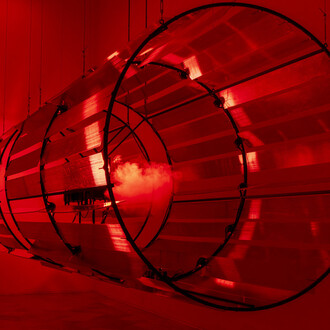The RCHF raised the curtain on Seville’s next-to-last batch of local talents who are now consolidated mid-career artists, a generation that burst onto the scene in the year 2000 and today occupy a place of prominence in the Spanish art world. Two decades later—a more than prudent lapse of time, providing the distance necessary to properly gauge past events—this investigation goes back to the beginning, analysing the origins and adventures of “the Channin”.
The first major RCHF retrospective at the CAAC basically surveys a five-year period (1999–2004) in the lives of the Channin crew, a trio who unwittingly stumbled upon a new relational formula that was catapulted to prominence by the carefree personality and charisma of the group’s members. The Richard Channin Foundation became the guiding light of young art in Seville at the turn of the 21st century, a beacon that burned brightly but soon went out when the collective deflated as spontaneously as it had come into being.
The need for a retrospective at this juncture is justified, in large part, by how the protagonists’ careers have flourished over the years. If Miki Leal (Seville, 1974), Juan del Junco (Jerez de la Frontera, 1972) and Fernando Clemente (Jerez de la Frontera, 1975) were not now critically acclaimed artists, this investigation would be far less pertinent. The fame they achieved in later years gives merit to this early time, turning what might seem to be the amusing antics of a group of twenty-year-olds into a historical episode that portrays a recent period of contemporary art in Seville. We must also consider that the chapters in question are not isolated moments but a fundamental part of a larger plot which also narrates the first steps of other respected artists who emerged at that time in the orbit of the RCHF phenomenon: José Miguel Pereñíguez, Rubén Guerrero, Cristóbal Quintero, Javier Parrilla, Norberto Gil, Mariajosé Gallardo, Ramón David Morales and Manolo Bautista, among others.
















